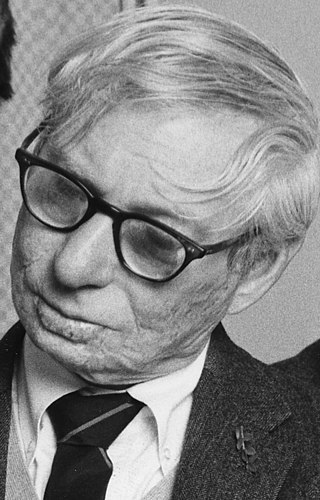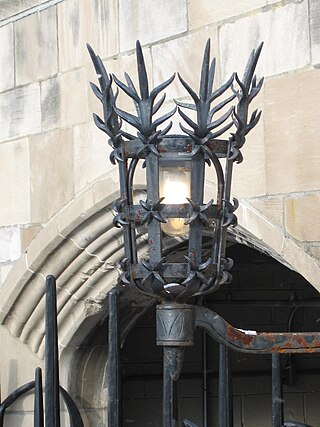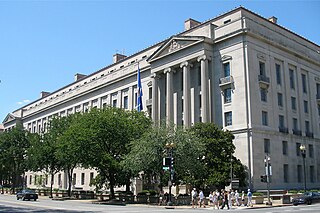| Industry | Architecture (civic and institutional) |
|---|---|
| Founded | 1905 in Philadelphia, Pennsylvania, U.S. |
| Defunct | 1950 |
| Fate | Zantzinger & Borie |
| Headquarters | , United States |
Key people | Dominique Berninger, Charles Louis Borie Jr., Louis Kahn, Milton Bennett Medary, Clarence C. Zantzinger |
| Products | Preliminary design work, Philadelphia Museum of Art |
Zantzinger, Borie and Medary was an American architecture firm that operated from 1905 to 1950 in Philadelphia. It specialized in institutional and civic projects. For most of its existence, the partners were Clarence C. Zantzinger, [1] Charles Louis Borie Jr., [2] and Milton Bennett Medary, [3] all Philadelphians.
The firm was a launching pad for numerous architects of note, including Dominique Berninger (1898–1949) and Louis Kahn (1901–1974).
The firm was established in 1905 as Zantzinger and Borie. Zantzinger and Borie were involved in years of preliminary design work on the Philadelphia Museum of Art. The 1911 commission was shared between Z&B and Horace Trumbauer. Most of the credit for the final building, completed in 1928, is given to architects Howell Lewis Shay and Julian Abele, both from Trumbauer's firm. [4]
After Medary joined in 1910, the firm was renamed Zantzinger, Borie & Medary.
The firm collaborated with Paul Philippe Cret for the completed buildings listed below, and on proposals for the Nebraska State Capitol and the Liberty Memorial in Kansas City. When Medary died in 1929, the firm returned to its original name. Their work was part of the architecture event in the art competition at the 1928 Summer Olympics. [5]
The firm was the first recorded American employer of French-born American architect Dominique Berninger, who worked there from 1925 to 1932. [6] During this time he served as job captain for their design project of the Sheffield Scientific School at Yale University, New Haven, Connecticut, a project that cost around $1,250,000. [6] Louis Kahn and Berninger had met while working at the firm and went on to form the Architectural Research Group (ARG) in Philadelphia, a short-lived collaborative society from 1932 to 1935 before Kahn took a job with the Philadelphia City Planning Commission, while Berninger commenced his own practice in 1933 and later formed the partnership of Berninger & Bower (fl.1935 – 1945), the predecessor firm of Haag & d'Entremont (fl.1946 – 1988). [6]
The firm employed Edmund R. Purves as a draftsman from 1923 to 1927. [7] The firm also worked with sculptor Lee Lawrie and iconographer Hartley Burr Alexander, both former collaborators with Bertram Goodhue.
The firm dissolved in 1950.

Louis Isadore Kahn was an Estonian-born American architect based in Philadelphia. After working in various capacities for several firms in Philadelphia, he founded his own atelier in 1935. While continuing his private practice, he served as a design critic and professor of architecture at Yale School of Architecture from 1947 to 1957. From 1957 until his death, he was a professor of architecture at the School of Design at the University of Pennsylvania.

Lee Oscar Lawrie was an American architectural sculptor and a key figure in the American art scene preceding World War II. Over his long career of more than 300 commissions Lawrie's style evolved through Modern Gothic, to Beaux-Arts, Classicism, and, finally, into Moderne or Art Deco.

Samuel Yellin (1884–1940), was an American master blacksmith, and metal designer.

Paul Philippe Cret was a French-born Philadelphian architect and industrial designer. For more than thirty years, he taught at a design studio in the Department of Architecture at the University of Pennsylvania.
Milton Bennett Medary Jr. was an American architect from Philadelphia, practicing with the firm Zantzinger, Borie and Medary from 1910 until his death.
Hartley Burr Alexander, PhD (1873–1939), was an American philosopher, writer, educator, scholar, poet, and iconographer.

Horace Trumbauer was a prominent American architect of the Gilded Age, known for designing residential manors for the wealthy. Later in his career he also designed hotels, office buildings, and much of the campus of Duke University.

Julian Francis Abele was a prominent Black American architect, and chief designer in the offices of Horace Trumbauer. He contributed to the design of more than 400 buildings, including the Widener Memorial Library at Harvard University (1912–15), Philadelphia's Central Library (1917–27), and the Philadelphia Museum of Art (1914–28). He was the primary designer of the west campus of Duke University (1924–54).

The Robert F. Kennedy Department of Justice Building, sometimes called Main Justice, is the headquarters of the United States Department of Justice. It houses Department of Justice offices, including the office of the United States Attorney General. The building was completed in 1935. In 2001, it was renamed after Robert F. Kennedy, the 64th Attorney General of the United States.

George Howe (1886–1955) was an American architect and educator, and an early convert to the International style. His personal residence, High Hollow (1914-1917), established the standard for house design in the Philadelphia region through the early 20th century. His partnership with William Lescaze yielded the design of Philadelphia's PSFS Building (1930–32), considered the first International style skyscraper built in the United States.
Oscar Gregory Stonorov was a modernist architect and architectural writer, historian and archivist who emigrated to the United States from Germany in 1929. His first name is often spelled "Oskar".

H2L2 is an architecture firm in Philadelphia founded in 1907 by Paul Philippe Cret as The Offices of Paul Philippe Cret. In 1923, John Harbeson became Cret's partner, along with William J. H. Hough and William Livingston. In 1925 the firm was joined by Roy Larson. After Cret's death in 1945, the younger partners followed Cret's wishes and removed Cret's name from their masthead, continuing as Harbeson, Hough, Livingston & Larson. In 1976, the firm officially became H2L2 after years of using the name informally. In 2012, H2L2 and NELSON, which was founded in 1977 as an interior design firm, merged to create a full-service architecture/engineering firm.

The Ruth and Raymond G. Perelman Building—originally the Fidelity Mutual Life Insurance Company Building—is an annex of the Philadelphia Museum of Art containing exhibition galleries, offices, conservation labs, and the museum library. It is an Art Deco building that features cathedral-like entrances and is adorned with sculpture and gilding. The building is listed on the National Register of Historic Places. The Perelman Building is located at the intersection of Pennsylvania Avenue and Fairmount Avenue, facing the Philadelphia Museum of Art's main building across Kelly Drive.
Dominique Berninger (1898–1949) was a French-born American architect based in Jenkintown, Pennsylvania, United States, who practiced nationally in the mid twentieth century but particularly in Pennsylvania. He is best known for his design of the French Pavilion for the New York World's Fair of 1939. Together with Louis Kahn, he founded the short-lived Architectural Research Group (ARG) in Philadelphia. He was a partner in the firms of Carswell, Berninger & Bower, Berninger & Bower (1935-1945) and Berninger, Haag & d'Entremont (1946)
The Architectural Research Group (ARG) was an association of mostly young architects in Philadelphia, Pennsylvania, established in 1932 by Louis Kahn and Dominique Berninger "for the group study of Housing and Slum Clearance." Berninger acted as its president during the whole of the group's brief existence, 1932 to 1935. Until 1932, both founders were employed by the Philadelphia firm of Zantzinger, Borie & Medary, with Kahn working on their U.S. Department of Justice Building in Washington, D.C.
Clarence Clark Zantzinger (1872-1954) was an architect and public servant in Philadelphia, Pennsylvania.

Nicola D'Ascenzo was an Italian-born American stained glass designer, painter and instructor. He is best known for creating stained glass windows for the Washington Memorial Chapel in Valley Forge, Pennsylvania; the Nipper Building in Camden, New Jersey; the Loyola Alumni Chapel of Our Lady at Loyola University Maryland; the Folger Shakespeare Library and Washington National Cathedral, both in Washington, D.C.

Edward Maene was a Belgian-American architectural sculptor, woodcarver and cabinetmaker.
Edmund Randolph Purves was an American architect and executive director of the American Institute of Architects. He was also a highly decorated soldier in World War I, serving in both the American Field Service and the American Expeditionary Forces.

John N. Richards (1904–1982) was an American architect in practice in Toledo, Ohio, from 1940 to 1976. From 1958 to 1960 he was president of the American Institute of Architects.
...Announcement has just been made by the Government that Zantzinger, Borie & Medery, architects of Philadelphia, have been selected to design and supervise the....